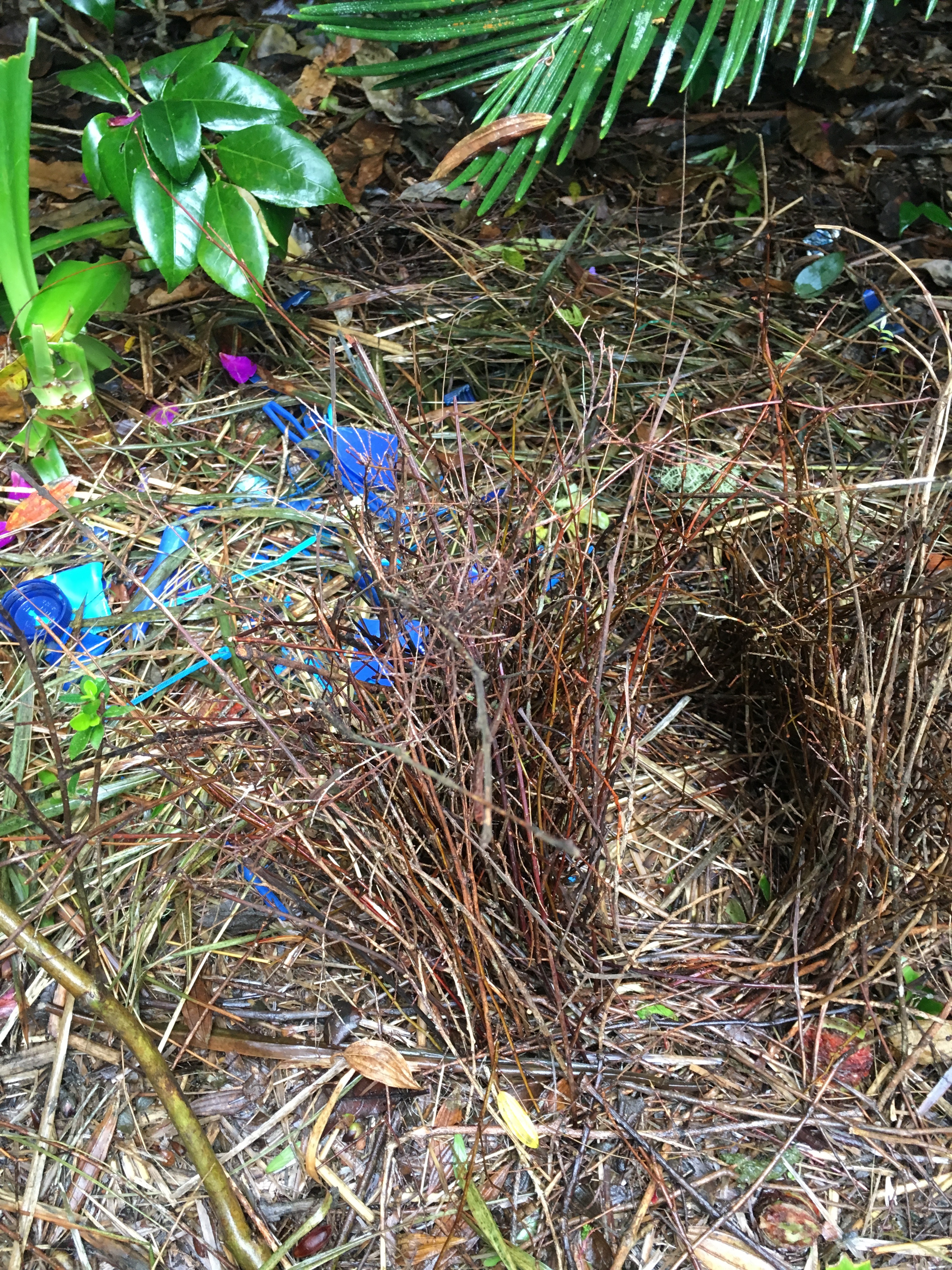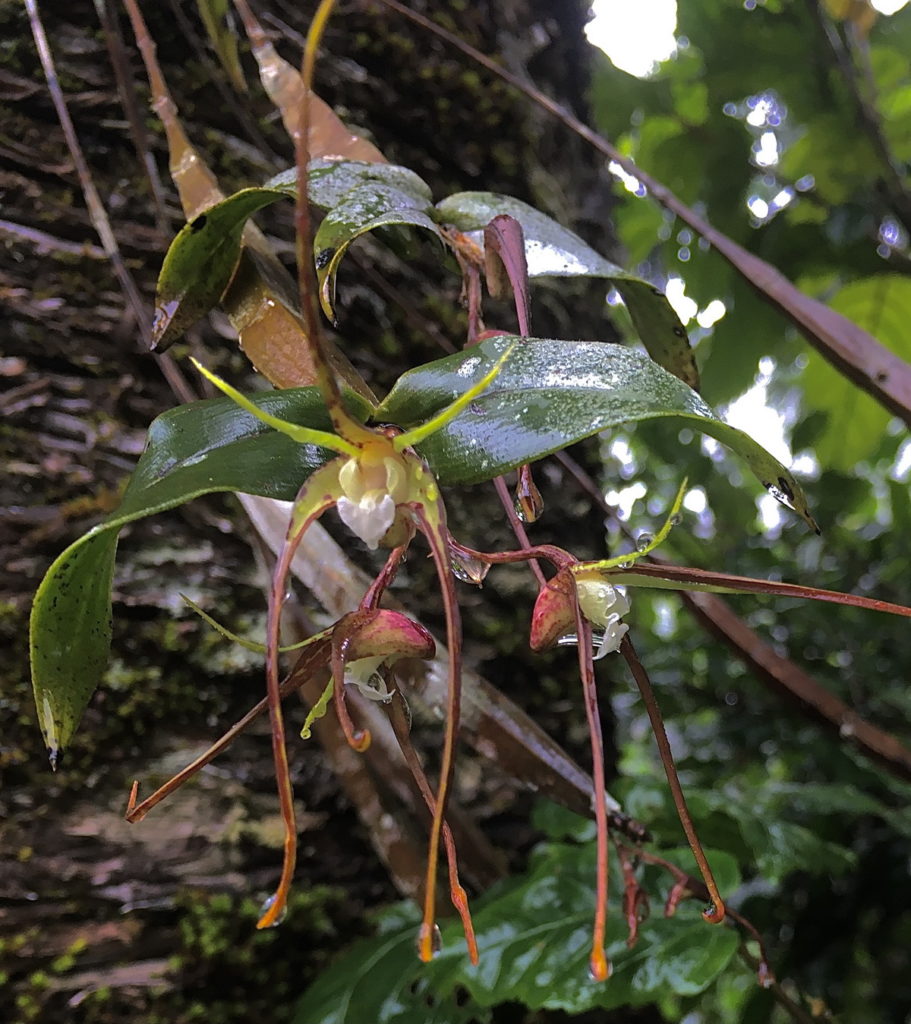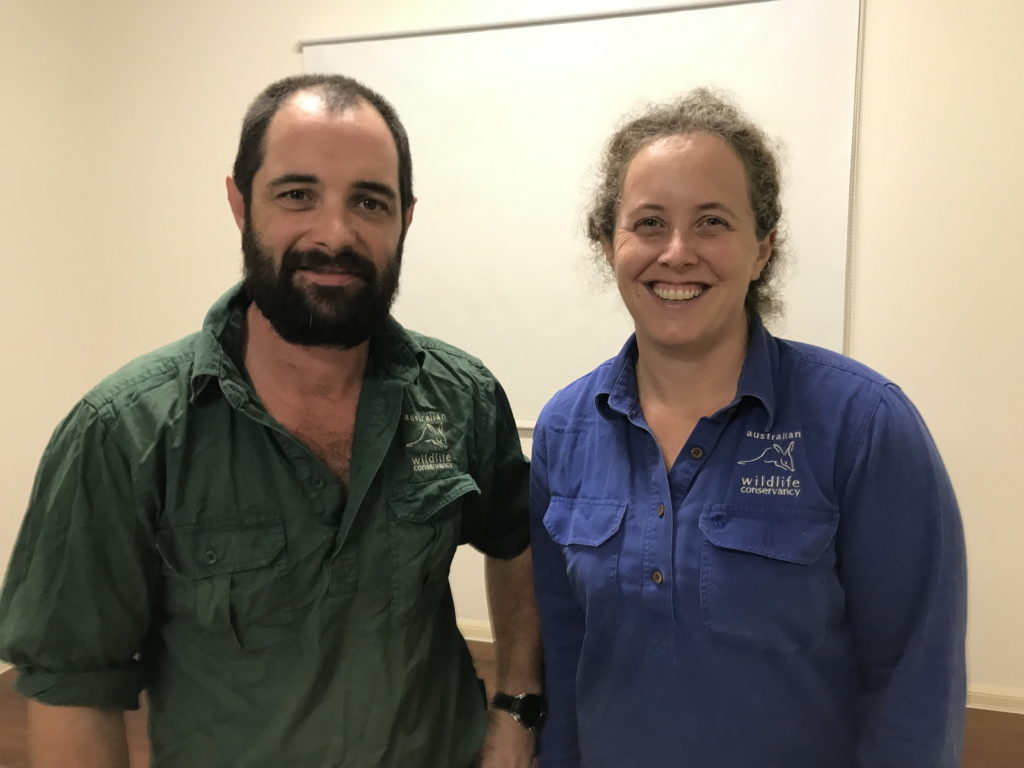We have previously posted several articles on this website regarding the amazing bowers built by the satin bowerbirds in and around the village of Paluma.
This is a story of two bowers and the concerted efforts of my resident satin bowerbird/s to build and maintain their bower in the face of considerable adversity.
A few weeks ago at the start of the breeding season I noticed that the satin bowerbirds were very active in the garden – in their favourite spot where a bower has been built over two successive years. So, it didn’t surprise me to see work had begun on a new bower (no.3) this breeding season. The construction of the bower was well under way and various blue objects started appearing in the garden as the efforts ramped up to build the bower and tempt the female birds in. There was some frenetic activity going on.
Then…….along came the tree trimmers to prune the vegetation from the transmission lines.
At my place they pruned some sizeable branches and left most of them behind littered throughout the garden. The clean up effort by the crew was pretty poor to say the least. As I cussed (numerous times) and began cleaning up the branches left behind, I noticed that a large branch had been lopped and left right on top of the bower. I promptly removed it to discover that the bower had been flattened to a pulp (along with several of my garden plants). In addition, the large branch left on top of the bower meant that the birds could not get access to the area to retrieve their twigs, sticks, blue trinkets and treasures to rebuild or relocate the bower.
I cussed again (more times than previously) and resolved with some disappointment that the bowerbird courting and breeding in my garden would be over for this year.
But that is not the end of this tale.
Coming back to my garden after two weeks away I was pleasantly surprised to see the bowerbird/s had rebuilt and re-erected the bower. It was bigger and better than before. There were new and many more blue trinkets scattered around the bower, along with pieces of bright green lichen. A new addition was the leaves of the exotic aluminium plant with the silvery upper side of the leaves carefully placed at the bower entrance. In recent times there has again been a hive of courting activity and chortling at the bower and around the garden.
It never ceases to amaze me how adaptable and innovative these birds can be. Not only do they collect and re-use the plastic contaminants we humans leave in the environment (well at least the blue pieces), they also re-adjust quite readily to our invasion of their rainforest home and our constant interference in their breeding and life cycle.
If only we humans were so tolerant and adaptable to the other species sharing the planet!


Text & Photos by Michele Bird




































